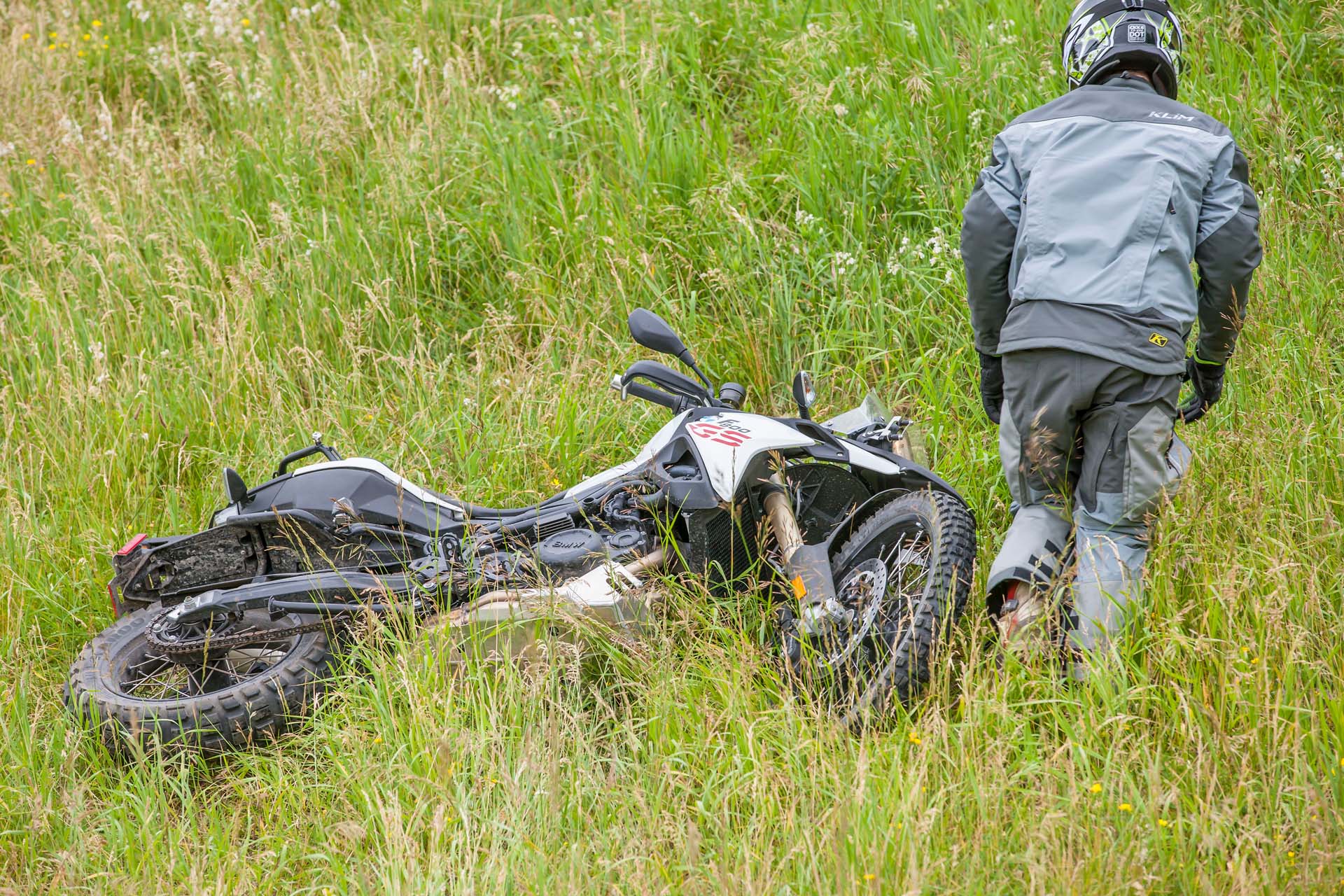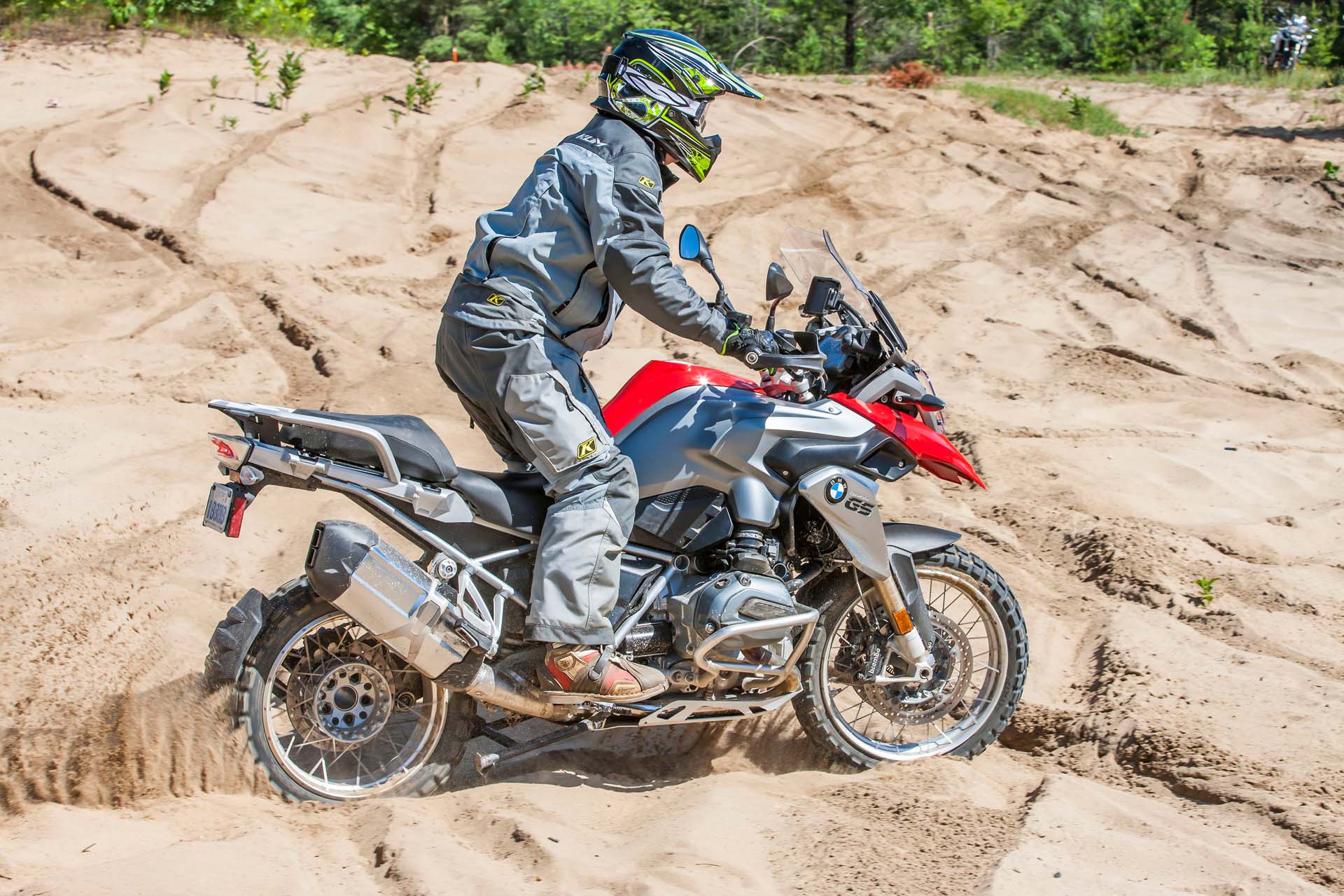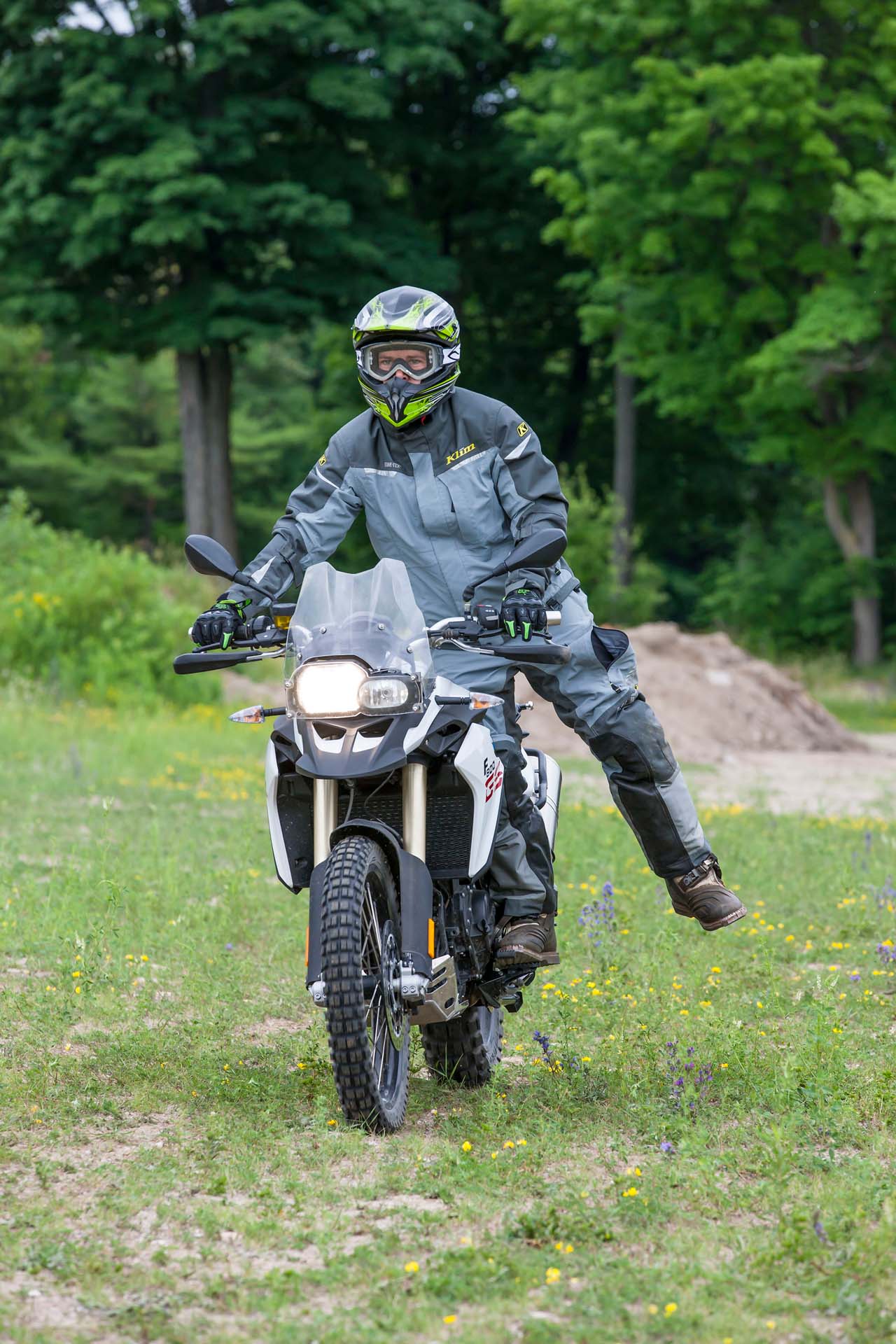Riding in deep sand is an almost-perfect metaphor for life. Weight back, carry your momentum. If you stop, you drop. If you panic, you drop. If your reactions are too big, you fall. In deep sand, as in life, the key is to find your way forward without forcing it.
Use the weight of your body on the pegs to trace the best arc you can. Let the sand buck and kick and shake the handlebars around in your arms, but don’t let go. Hold on, but not too tight, let the sand have its little tantrum, let it throw your front wheel from side to side, but keep your eyes forward. Look up, always look up.
And look where you want to go. Focus on where you want to be. Settle in and let constant momentum and gentle persuasion find your way through, ride the troughs, accept the pitfalls. And when you do get stuck, when the thing bogs down under you and you can’t figure out how to get through the quagmire – light that throttle up, hard, and ride yourself out on the power.
My personality doesn’t lend itself to this style of riding easily. I’m impatient, impulsive and I like to keep my program running on the arc I’ve prescribed. I hold on too tight to things I ought let go, I wrestle for control when control isn’t available, or necessary. I try to hustle with my meagre upper body strength when a judicious application of my substantial body weight will achieve more results.
And so, I crashed. A lot.

Not at first, mind you. I went a good minute or so in the sand pit before I had my first splutter – losing momentum up a hill and failing to stay in it. Once I had that first stack, the hits kept coming.
Again, like life. That first stumble can have a ripple effect that amplifies forward. All of a sudden you’re taking off from a less-than-optimal position, you’re on the back foot. You’ve just lifted a bike off yourself, and you’re tired. Mentally, you are spooked. Physically, you’re a puddle. I had Amanda Kennedy – a GS instructor with Clinton Smout’s BMW Academy to help me pick the bike up, and it still sapped my strength.
Six more times I went down, and then for the next ten minutes slowly zig-zagged my way back to the starting point – no longer confident enough to dictate the direction, no longer strong enough to handle the bucking and shaking of the bike across the soft surface. I was a passenger, twisting the throttle and awkwardly searching for a firm spot on which to dismount and turn the bike again, pointing it hopefully (and vainly) towards my intended destination.

When we left “The Sahara Desert” as it had been nicknamed, the first patch of soft sand on the trail tripped me up again.
This is despite a day and half of trail riding through exactly the same trail with absolutely no incident. Failure can play tricks on your mind and your body, if you let it.
And in riding, just as in life, you can overcome your lack of knowledge or skill with the right help.
Fortunately for me, BMW was providing that help.
BMW’s GS training program is a highly structured, highly regarded motorcycle curriculum developed by some of the world’s best motorcycle adventure riders. It exists primarily to enhance the skills of riders globally, but also as a showcase of the German marque’s off-road motorcycle capability. GS-labelled machines come in a wide range these days but the premise behind that badge is always the same: extreme off-road usability.

In Canada, you can get your GS certificate from Clinton Smout of SMART Riding Adventures in Horseshoe Valley near Barrie in Ontario. Clinton is the same off-road guru who helped us explore the 2016 Honda Africa Twin earlier this year out in British Columbia.
His co-instructor, Amanda Kennedy is about to be flown to Germany to be fully certified as a GS instructor. She graciously told us that she also fell multiple times her first time on the patch of sand they’ve nicknamed “The Sahara Desert”. I didn’t believe her – she showed me the video. Our experiences were almost identical – a long period of “Hey, I’m doing this!”, a fall, and then many, many falls.
But don’t let me get too bogged down in the humbling experience of the sand. That’s only one part of the curriculum available, and it's one you can skip if you want.

Using the fleet of BMW F800 GS and BMW R1200 GS (and even a BMW GS 650) we also learnt techniques for climbing steep grades, descending steep grades, getting going again after failing to make it up the steep grade, and recovering from a crash on a steep grade.
If you find yourself unable to complete a hill climb due to a mistake or a lack of momentum, the best thing, Clinton explains, is to stop with the engine in gear, and cut the engine. From there, you want to slowly use the clutch to inch the bike backwards down the hill, turning the wheel as you go so the bike is pointed back down the hill. In slow jerks, we managed to turn our bikes around, letting the engine act as a brake as we inched back.
Well, we eventually did. First, some of us dropped our bikes – but only so we could learn how to recover them, of course. With crash bars fitted to the F800, and the boxer engine providing a natural pivot point for the R1200, it is best to leave the bike on the ground, turn the front wheel skyward, and drag the bike around until it’s pointing down the hill. Then, and only then, make sure the bike is in gear (so it doesn’t roll away when you pick it up) and use the handlebar end to lift it carefully back upright. Why the bar end? Leverage.
Even my wet noodle arms were able to hike the bike back up onto its wheels using Clinton’s bar-end method.

We also did exercises in braking on gravel, peg steering (including standing to the side of the bike on one peg as we rode around and stuck our legs out to get used to the weight transfer) and rear-brake slides.
All of this, to prepare us for the trails. Up in Barrie, a network of privately owned, publicly accessible trails is managed by the Simcoe County Forestry. You can ride them on a license provided by the Ontario Federation of Trail Riders. Some are tight and narrow, some winding and fast, some with obstacles and hills and creek crossings. A sudden rain shower turned our trail to mud, giving us a chance to test the F800 and the R1200’s ability to manage slippery conditions. With the electrically adjustable suspension (ESC) set to Enduro mode and the traction control off, we descended then ascended two sets of muddy slopes.
In GS school, they teach you to use the front brake ever so gently on downhill slopes and to let BMW’s very effective ABS system keep the front from washing out – I was amazed how much pressure I could actually put on the front end and how slowly I could actually descend, letting my peg weight select a line through the gullies and ruts. On the way up, the grunty torque of BMW’s adventure bikes helped me overcome gravity and the natural balance of these off-road chassis helped me guide the bike up the hill even as the back tire scrabbled and searched for grip.
The two-day GS school costs $600 – with $150 to $400 tacked on if you want to rent one of their bikes. You can also choose to stay at the Horseshoe Valley Resort between days and Clinton’s squad will pick you up there in the mornings.
For that sort of money you’ll be able to not only get your head around BMW’s GS range of adventure bikes – you’ll learn a fair bit about life as well.















































